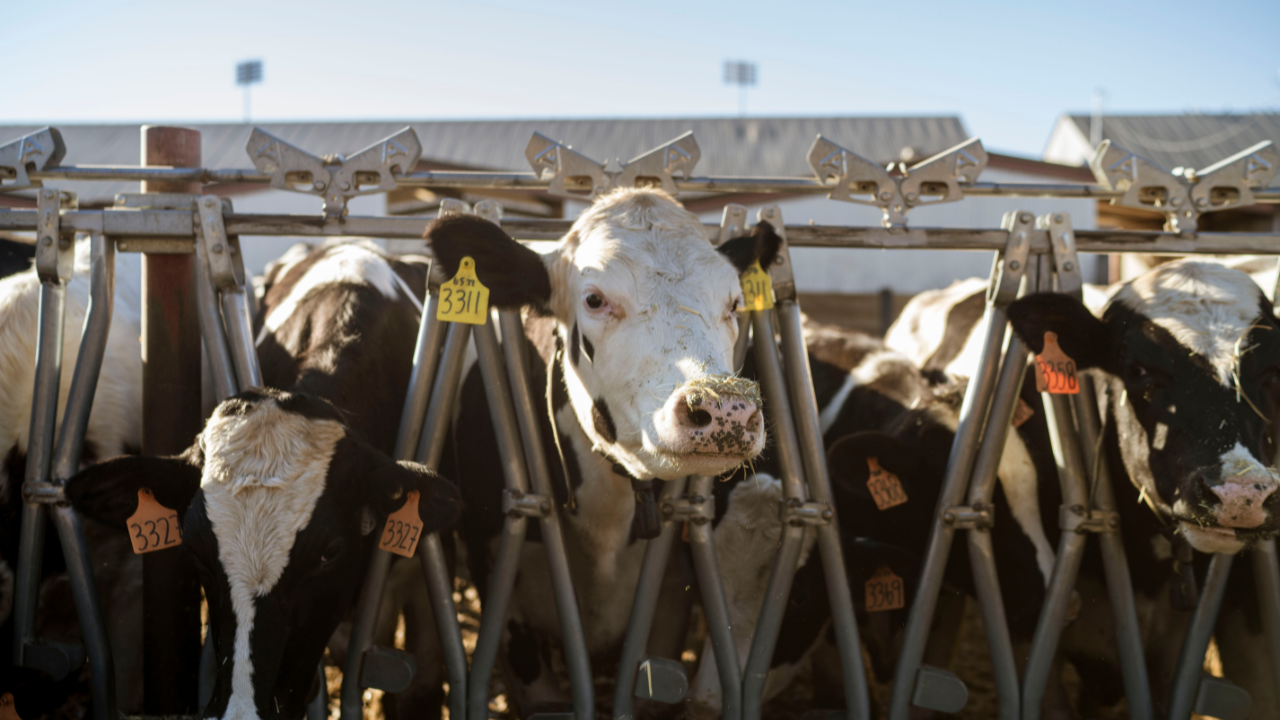
Safe and effective? Bovaer goes on trial
By Frank Mitloehner
While many Americans were enjoying U.S. Thanksgiving late in 2024 and the official kickoff to the December holidays, food and culture arguments were raging across the pond. Consumers, farmers and influencers were bashing Arla Foods’ use of 3-NOP (under the brand name Bovaer) in milk production. The key questions that emerged: Do we really need to worry about methane emissions from cattle, and if so, is Bovaer a safe way to chip away at those emissions?
Methane — what’s the big deal?
The first question is easy: Yes, yes, yes, we need to worry about — and do something about — methane emissions from cattle. In much the same way as governments, NGOs and university researchers worldwide are striving to reduce our reliance on fossil fuels in transportation, industry and other segments, those of us who work in agriculture are fixated on making the entire sector less methane intensive. And with good reason.
The greenhouse gas known as methane is prevalent in agriculture, especially animal agriculture. In fact, it’s the second-most plentiful and potent of the greenhouse gases, and packs a punch in the short term, at a time when we can ill afford more atmospheric warming.
Because methane lasts in the atmosphere for a relatively short amount of time, if we can reduce emissions enough from livestock, we can slow warming caused by animal agriculture and ideally buy some time to reduce emissions in other sectors.
It’s further important to keep in mind that the methane belched from cattle is a loss of energy. If we can find ways to keep that energy in the animal, we may see efficiency gains.
Bovaer makes its mark
The feed additive known as Bovaer is a synthetic organic compound that can be added to cattle feed in order to reduce the methane they produce and expel. It works by targeting methyl-coenzyme M reductase (MCR), the enzyme that creates methane in the rumen of ruminant animals such as cattle. Think of it as sort of an antacid for cows.
For several years, Bovaer has been adopted and used by more than 60 nations, including Brazil, Canada, Chile and those in the European Union. Because it is considered such an effective methane-reduction tool, we have been champing at the bit here in the United States, waiting for the very cautious U.S. Food and Drug Administration (FDA) to give it the green light. In May 2024, approval finally came for the use of Bovaer in lactating dairy cows. But before that, the FDA had more than 150 peer reviewed scientific studies at its disposal, with many more to come. No other methane lowering feed additive had ever undergone more of a scientific scrutiny regarding its efficacy and safety. At the CLEAR Center, we currently are studying its use long term on two dairies over the course of 1,000 days. That important work must always continue.
So, is Bovaer safe? All studies to date have shown Bovaer to be safe, including this one published in 2021 in the journal of the European Food Safety Authority. The additive is added to the feed ration and thus introduced to a cow’s stomach and digestive tract. The active ingredient — 3-NOP — does its work there, as noted above. It’s metabolized rapidly in a cow’s rumen and converted into substances that are naturally present in its digestive system. Studies indicate no metabolites of 3-NOP are detectable in the milk of cows that consume it or in the cows’ waste.
That said, it's worth mentioning that in its pure form, similar to many other additives, , 3-NOP poses risks to humans if it’s inhaled. It is likewise irritating to skin and eyes, so normal caution should be exercised when it’s handled by workers. That’s highly manageable and a far cry from the controversy that’s been triggered by cautious warnings there could be male reproductive issues associated with the use of Bovaer. It is at best an overreaction. The conclusion was drawn from lab tests with rats (and never humans) that were fed the equivalent of 120 times the dose of what we put in a cow’s diet.
Bovaer is not new on the horizon. It has been studied for years, and I believe we need to keep studying it. As scientists, we should never be satisfied with yesterday’s information. And yet, we need to proceed with the best data we have. Otherwise, we risk being caught at a standstill. We can ill afford to do nothing.
We’re asking our farmers to shoulder a large part of the burden of climate responsibility as we look for solutions to negate fossil fuel emissions. Companies that produce animal-source foods, consumers who buy meat and dairy products, and policymakers worldwide are pointing at the agriculture sector as low-hanging fruit for greenhouse gas reductions. That may well be in part because there isn’t a more resourceful or can-do sector out there. Our farmers, longtime stewards of the land, have proven time and time again they can produce more food than ever with less resources than ever. We’re asking them to do so again.
But they can’t go it alone. We have to be there to support them, and that includes giving them all the knowledge, data and information we have. Additionally, feeding methane-reducing feed additives comes at a cost, and addressing related costs cannot be left to farmers alone if we hope to see broad adoption of climate solutions.
I’m encouraged to see more products that reduce methane finally available to U.S. producers. Society continues to ask much of our farmers, and I hope they can rely on society to help usher in tools that allow them to meet the demands we place on them.
We’re all in this together.
